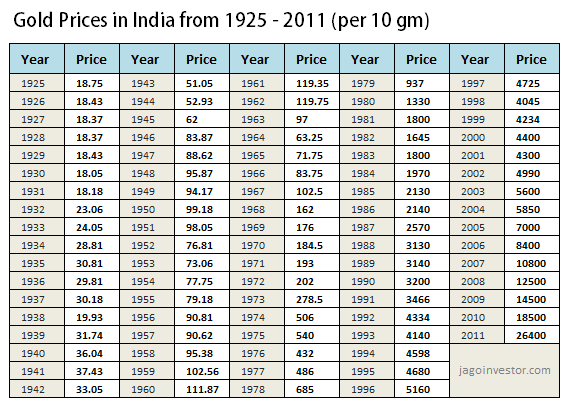Contents
Suppose the government increases the taxes on tobacco which leads to an increase in the prices. So, a person addicted to smoking won’t stop buying cigarettes. However, if the prices go on increasing and the person now can not afford to spend extra on those cigarettes, he or she may get rid of the habit. This makes the price elasticity of cigarettes for that consumer elastic in the long run. In general, we can say that the more good substitutes are there, the more elastic demand will be. Suppose a coffee seller company increases the price for its cup of coffee by $1.
Prices rose to a national average peak of almost $4.10 per petrol during the oil and gas bubble in 2008, and customers adjusted their behaviour by requesting less gas. The materials that exhibit elasticity or get deformed are known as the elastic materials and the bodies that will not get deformed are known as rigid bodies. In rigid bodies, the separation between its constituent particles will not change. In nature, they are not perfectly elastic and perfectly rigid.
Further you can also file TDS returns, generate Form-16, use our Tax Calculator software, claim HRA, check refund status and generate rent receipts for Income Tax Filing. ClearTax offers taxation & financial solutions to individuals, businesses, organizations & chartered accountants in India. ClearTax serves 1.5+ Million happy customers, 20000+ CAs & tax experts & 10000+ businesses across India. The elasticity is calculated by dividing the percentage that changes in quantity by the percentage price changes in a given period. Now, let us move from the consideration of forces that affect the motion of an object to those that affect an object’s shape. A change in shape due to the application of a force is a deformation is also known as the elastic force.
McDonald’s to Coca-Cola: Why are CEOs suddenly obsessed with ‘elasticity’?
The consumers are likely to switch to another company or they may even replace their cup of coffee with a cup of strong tea. This means that the cup of coffee is an elastic good as a small increase in the price is resulting in a large decrease in the demand. Price Elasticity of supply measures the responsiveness to the supply of a good or service after a change in its market price. Some basic economic theories explain that when there is a fall in the price of a good its supply is also decreased and when the prices are on a rise the supply is increased. Price Elasticity of Demand or PED measures the responsiveness of quantity demanded to a change in price. There are two ways to measure PED- arc elasticity that measures over a price range, and point elasticity that measures at one point.
- If a small rise in price leads to a big fall in demand, the item is said to be more elastic.
- The formula’s output determines the magnitude of the influence of a price adjustment on the amount required for a commodity.
- Elasticity is a financial idea used to gauge the adjustment in the total amount demanded for a good or service according to value developments of that good or service.
- We at IndianMoney.com update all the new terms used in personal finance in the Financial Dictionary.
- Let’s begin our blog with a definition of Elasticity of Demand and then we will explore the different types of Elasticity of Demand.
Since demand for certain products is more responsive to changes in prices, demand may be elastic or inelastic. When the demand is elastic for a product, the required quality is highly responsive to price changes. When the demand for a commodity is inelastic, the appropriate quality reacts poorly to changes in prices. In the above formula, Ep represents the symbol for price elasticity of demand.
Zero price elasticity of demand means
The fractional change in the dimension of a body is produced by the external stress acting on is called strain. The ratio of change of any dimension to its original dimension is called the strain. Since strain is the ratio of two identical dimensions, therefore strain is a unitless quantity. For example, if the https://1investing.in/ price of a good goes down by 10%, the proportionate change in its demand will not go beyond 9.9..%, if it reaches 10% then it would be called unitary elastic demand. In relatively elastic demand, if the price of a good increases by 25% then the demand for the product will necessarily fall by more than 25%.

Now we will know the relation of the modulus of elasticity or Young’s modulus with other elastic constant. Modulus of elasticity also defines the relationship between stress and strain in a material. The value of the modulus of elasticity is pretty important in the case of deflection of different materials which is used in building and bridge construction. Hence in the SI system, the unit of the modulus of elasticity will be lb/ft². Hence in the SI system, the unit of the modulus of elasticity will be N/m² or Pascal. Where E is a constant which is known as the modulus of elasticity or Young’s modulus.
elasticity in Kannada ಕನ್ನಡ
The price elasticity of supply refers to a measure that shows the sensitivity of the quantity, that is supplied, in accordance with price variation. Income elasticity means the definition of elasticity responsiveness of a particular quantity, that is demanded, according to income variation. This income here refers to the real income of customers who purchase the product.
The income levels of consumers play an important role in the quantity demanded for a product. This can be understood by looking at the difference in goods sold in the rural markets versus the goods sold in metro cities. This measure of responsiveness of quantity demanded when there is a change in price is termed as the Price Elasticity of Demand . Three main factors affect a good’s price elasticity of demand.

Based on the value of elasticity variables are categorized as elastic or inelastic. An elastic variable is one that responds more than proportionally to changes in other variables. In contrast, an inelastic variable is one which changes less than proportionally in response to changes in other variables.
The subject of economics has several concepts that need our attention. It talks about the sensitivity of one variable due to a change in other variables. In business and economics, elasticity refers to the degree of change, to which individuals, customers, producers, and suppliers alter demand and supply when variables like income is changed. Elasticity defines a property of an object that has the ability to regain its original shape after being stretched or compressed. Learn about the deforming force applied on an elastic object and how the stress and strain works on an object. What is a Hooke’s law and how it is applicable for the concept of elasticity.
Information provided about elasticity:
In case the two goods are substitutes for each other like tea and coffee, the cross price elasticity will be positive, i.e. if the price of coffee increases, the demand for tea increases. On the other hand, in case the goods are complementary in nature like pen and ink, then the cross elasticity will be negative, i.e. demand for ink will decrease if prices of pen increase or vice-versa. According to the definition of relatively inelastic, relatively big increases in price result in relatively little changes in quantity. To put it another way, quantity does not respond very well to price. More specifically, the quantity change as a percentage is smaller than the price change as a %. When consumers have a limited number of imperfect alternatives to select from, the demand for a good or service is relatively inelastic.
Elastic are those that are highly affected by changes in the variables while inelastic goods are those that have negligible effects of changes in the market variables. The four different types of elasticity explain the effect of variables on demand and supply. Cross Elasticity of Demand is an economic concept that measures the responsiveness in the quantity demanded of one good when the price of other goods changes. The concept of cross elasticity of demand refers to the measurement of a specific quantity’s sensitivity in response to the other product’s price change.
When we discuss the subject of economics, two of the most talked-about terms are- demand and supply. Elasticity of demand and elasticity of supply are the two main types of elasticity. Elasticity refers to a measure of the sensitivity of a variable in accordance with another variable’s change. This way, one can measure the change in aggregate product demand with respect to price changes. A product shall be termed as elastic if its demand varies more than the proportional amount of change in its price. Income is one of the factors that influence the demand for a product.
Thus, the slope of the demand curve for a perfectly elastic demand is horizontal. In a market where there is an oligopoly, multiple players compete. Thus, the quantity demanded for a product does not only depend on itself but rather, there is an effect even when prices of other goods change. We all need a few things for survival and we can not give up on them. These products that we require for survival are termed as necessity products. A large part of the Indian population is a daily consumer of rice grains.
Relatively Elastic Demand
However, a relatively elastic demand is when the change in demand is greater than the change in price. When it comes to goods and services and demand of consumers for them, it is pretty obvious that the demand of goods is affected by its price. This means that whenever the price of a commodity changes, this change will affect the demand of the commodity among the consumers. This relation of the price to the demand of goods and commodities can be explained better with the help of elasticity of demand.

